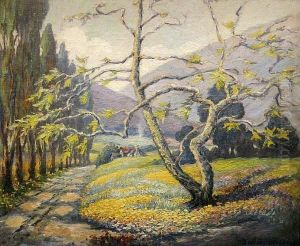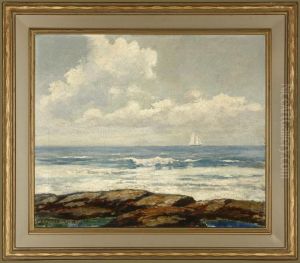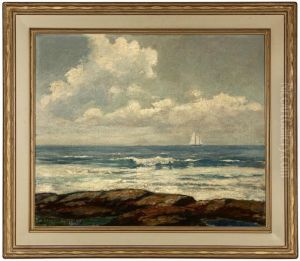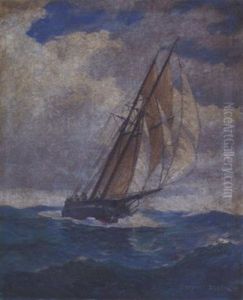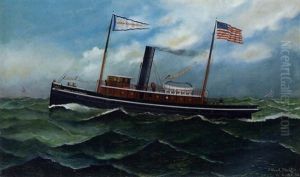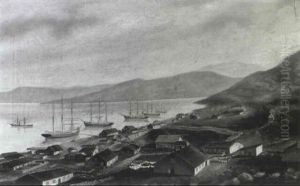James Stuart Blackton Paintings
James Stuart Blackton was a pioneering figure in the early history of cinema, known for his work as a director, producer, and as a co-founder of the Vitagraph Company of America. Born on January 5, 1875, in Sheffield, England, he emigrated to the United States as a child with his family. His entrance into the world of entertainment began as a vaudeville performer, which eventually led to an interest in the burgeoning field of moving pictures.
Blackton's career took a significant turn when he interviewed inventor Thomas Edison to demonstrate the Vitascope, one of the earliest film projectors. This experience inspired Blackton to start experimenting with film, and in 1897, he co-founded the American Vitagraph Company, which would become one of the most influential and innovative studios in the early 20th century. Vitagraph played a key role in the development of the narrative film, and Blackton was at the forefront of this movement.
As a filmmaker, Blackton is often credited with pioneering the stop-motion animation technique. His film 'The Humpty Dumpty Circus' (1898), although now lost, is reputed to be one of the first to use stop-motion animation with toys. He is also known for 'The Enchanted Drawing' (1900), which combined live-action with animation, and 'The Haunted Hotel' (1907), which was a marvel of special effects of its time.
During the peak of Vitagraph's success, Blackton produced and directed numerous films, including adaptations of Shakespeare and historical dramas. However, with the rise of Hollywood and the changing landscape of the film industry, Vitagraph's prominence began to wane. Blackton eventually sold his stake in the company in 1925.
Blackton's later years were marked by financial difficulties, and he attempted several comebacks without much success. He continued to be involved in the film industry, albeit in lesser capacities. Tragically, James Stuart Blackton died in a car accident on August 13, 1941, in Hollywood, California. Despite the decline of his career towards the end, his contributions to the early film industry and the development of animation and special effects techniques have cemented his legacy as one of the pioneers of cinema.
